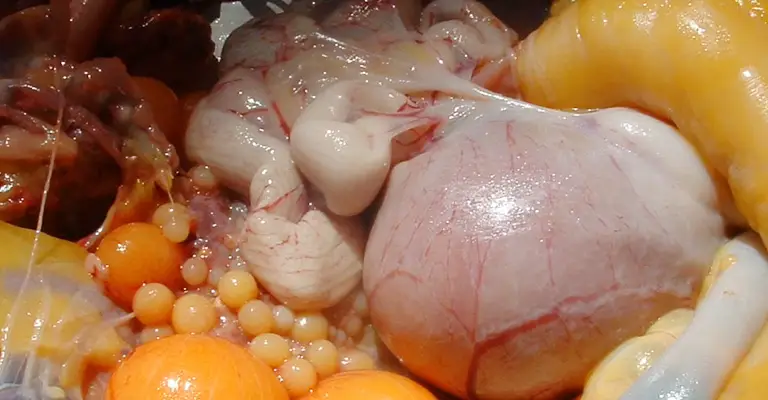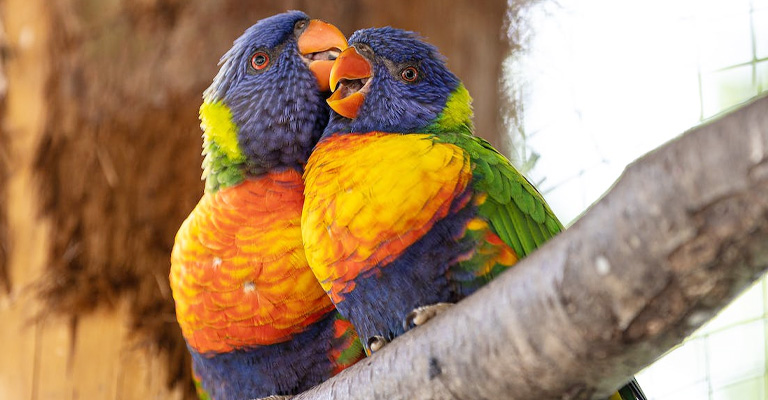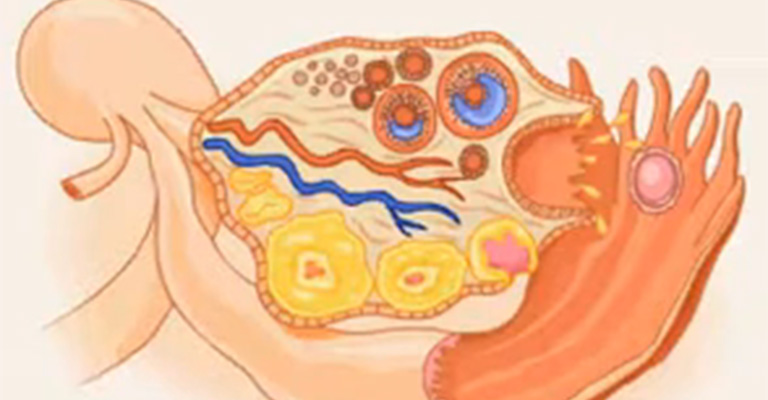The avian world is a realm of extraordinary adaptations and evolutionary marvels. One of the intriguing curiosities within this world is the absence of the right ovary and oviduct in female birds.
Unlike many other vertebrates, birds possess a single functional ovary. This peculiarity has puzzled researchers and naturalists alike, prompting investigations into the underlying reasons for this distinct reproductive structure.
Understanding why are the right ovary and oviduct absent in birds unveils the intricate interplay between evolution, flight capabilities, energy conservation, and reproductive efficiency.
Delving into this phenomenon offers a glimpse into the unique mechanisms that have shaped the avian reproductive system and paved the way for the diverse array of bird species that grace our skies.

Why Are The Right Ovary And Oviduct Absent In Birds?
The right ovary and oviduct are absent in most birds because of their evolutionary adaptations to flight and reproduction.
Having one ovary reduces their body weight and improves their aerodynamics, allowing them to fly faster and longer.
It also increases their metabolic efficiency and reproductive success, as they can allocate more energy and resources to egg production and laying.
Here are some points that explain why the right ovary and oviduct are absent in birds:
Energy Efficiency and Flight Adaptations
In the realm of avian evolution, the absence of the right ovary and oviduct is closely tied to the high-energy demands of flight.
Birds are known for their exceptional flying abilities, which require streamlined and lightweight body structures.
By eliminating the right ovary and oviduct, birds reduce the overall weight of their reproductive system, making it easier for them to achieve and maintain flight.
This adaptation allows birds to allocate more energy towards activities such as foraging, migration, and evading predators.
Minimizing Reproductive Costs

Birds have evolved to prioritize efficiency in reproduction. The left ovary and oviduct are sufficient for egg production and embryonic development.
By discarding the right ovary, birds conserve resources that would otherwise be expended on maintaining and developing a second ovary and oviduct.
This streamlined reproductive system enables birds to allocate energy and nutrients effectively, ensuring the survival of both themselves and their offspring.
Streamlined Anatomy and Space Constraints
The unique physiology of birds is marked by compact anatomy, optimized for their aerial lifestyle.
The absence of the right ovary and oviduct contributes to this streamlined body plan. Space within the body cavity is limited, and eliminating one ovary allows for the development of a larger, more functional left ovary and oviduct.
This specialization is advantageous for producing and delivering eggs efficiently without encumbering the bird’s overall form.
Selective Evolution and Trade-offs
Throughout millions of years of evolution, birds have undergone selective pressures that favor traits that enhance their survival and reproduction.
The loss of the right ovary and oviduct reflects a trade-off between reproductive investment and other adaptive traits.
Birds that allocated resources more effectively towards flying, feeding, or evading predators had a better chance of passing on their genes.
This evolutionary process ultimately led to the streamlined reproductive system observed in modern birds.
Species-Specific Adaptations
It’s important to note that not all birds have entirely lost their right ovary and oviduct. Some species, especially those with unique reproductive strategies, may still possess remnants or vestiges of these structures.
Evolution works in diverse ways, and the presence or absence of the right ovary and oviduct is a reflection of the specific ecological niches and reproductive demands of different bird species.
Functions Of The Right Ovary And Oviduct Of A Bird

The right ovary and oviduct of a bird are usually absent or very small and non-functional in most bird species, especially those that are able to fly or glide.
This is because having one ovary and oviduct reduces the body weight and improves the flight ability of birds. It also increases their metabolic efficiency and reproductive success, as they can allocate more energy and resources to egg production and laying.
However, some bird species, such as kiwis, ostriches, emus, falcons, owls, parrots, sparrows, and doves, have two ovaries and oviducts.
The functions of the right ovary and oviduct of a bird are similar to those of the left ones, but they may vary depending on the species and the environmental and physiological conditions.
Here are some possible functions of the right ovary and oviduct of a bird:
To Produce Eggs
The right ovary produces ova (yolks) that are released into the right oviduct. The right oviduct forms other parts of the egg, such as the albumen (egg white) and the shell. The right oviduct may also store eggs until they are ready to be laid.
To Produce Hormones
The right ovary produces steroid hormones such as estrogen, progesterone, testosterone, and corticosterone.
These hormones regulate various aspects of reproduction, such as follicular growth and maturation, behavioral changes such as mating and nesting, preparation of the oviduct for egg formation, maintenance of egg production and quality, and modulation of stress responses.
To Respond To Light Exposure And Photoperiod:
The right ovary is sensitive to light exposure, especially the number of hours of light in a day (photoperiod).
Light stimulates the hypothalamus and pituitary gland in the brain to produce hormones that control ovary function.
These hormones include gonadotropin-releasing hormone (GnRH), which stimulates luteinizing hormone (LH) and follicle-stimulating hormone (FSH) secretion; LH, which triggers ovulation; and FSH, which stimulates follicular growth.
To Select And Recruit Follicles Into A Hierarchical Order:
The right ovary selects and recruits follicles from the pool of white cortical follicles (small immature follicles) into a hierarchical order of yellow follicles (large mature follicles).
The selection process is influenced by hormonal and nutritional factors, as well as genetic and environmental factors.
The recruitment process involves the growth and differentiation of the selected follicles into small yellow follicles (5-8 mm) and then into large preovulatory follicles (9-40 mm).
The preovulatory follicles are arranged in a hierarchical order, with the largest one (F1) being the next to ovulate, followed by F2, F3, F4, F5, and F6.
To Ovulate One Or Two Eggs Per Day
The right ovulation process is triggered by a surge of LH from the pituitary gland, which occurs about 30 minutes after the previous egg is laid.
The LH surge causes the rupture of the F1 follicle and the release of the oocyte into the right oviduct.
The oocyte is then surrounded by albumen (egg white), shell membranes, and shell in the oviduct to form a complete egg.
FAQ
Birds have evolved to prioritize flight efficiency and energy conservation. Having one ovary reduces weight and allows more energy for activities like foraging and migration.
Over time, as birds adapted for flight, the right ovary regressed to make way for streamlined anatomy. It was likely an energy-saving trade-off for enhanced survival and mobility.
By having one ovary, female birds can allocate more resources to producing larger, higher-quality eggs. This maximizes reproductive success while conserving energy for other essential activities.
Yes, besides flight, factors like rapid egg-laying patterns and minimizing the risk of egg binding influenced the absence of the right ovary. Streamlining the reproductive system offered multiple advantages.
Most bird species possess a single functional ovary, but there are exceptions. Some birds with unique reproductive strategies, like kiwis and emus, still retain vestiges of the right ovary, reflecting their distinct evolutionary paths.
Conclusion
The absence of the right ovary and oviduct in birds is a testament to the incredible adaptability of life in response to environmental demands.
Evolution, driven by the need for efficient flight, energy conservation, and reproductive success, has sculpted the avian reproductive system into a streamlined and optimized structure.
By sacrificing the right ovary and oviduct, female birds have gained the ability to allocate resources effectively, produce high-quality eggs, and engage in the demanding activities of survival and reproduction.
This absence underscores the complexity of natural selection and the ways in which organisms evolve to thrive in their respective niches.
The avian reproductive system’s uniqueness reminds us of the intricate tapestry of life, where every adaptation contributes to the grand story of biodiversity and evolutionary success.